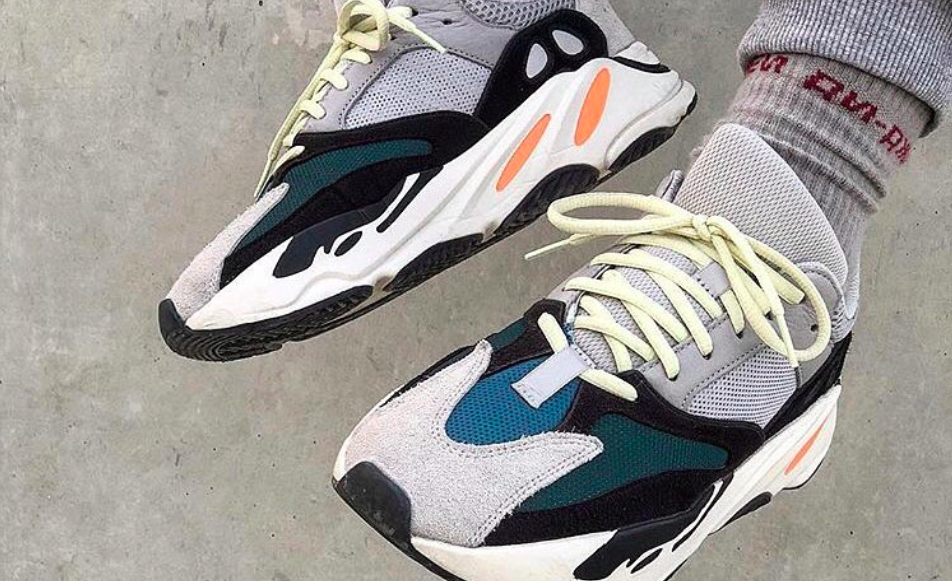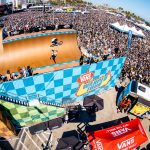Adidas lifted its profitability guidance for the year after reporting robust third-quarter earnings due to better-than-expected margins and strong double-digit growth in North America, China and across e-commerce channels. Yeezy delivered Adidas’ largest digital-release. But the year’s sales outlook was lowered as softness arriving in Europe earlier in the year worsened in the third quarter.
In the quarter:
- Revenues increased 8 percent currency-neutral and 3 percent in euro terms to €5.9 billion ($6.7 mm). Ten percent growth for Adidas Brand offset a 5 percent decrease at Reebok
- Gross margins were up 140 basis points to 51.8 percent despite severe FX headwinds
- Operating margin gained 130 basis points to 15.3 percent despite higher marketing investments
- Net income from continuing operations increased 19 percent to €656 million ($750 mm)
Kasper Rorsted, CEO, on a conference call with analysts noted that Adidas AG saw strong growth in its three strategic growth areas: North America, Greater China and e-com. Adidas Brand delivered 18 percent currency-neutral growth in North America, Greater China grew 26 percent currency-neutral and e-commerce vaulted 76 percent on a currency-neutral basis.
Significant growth was also seen in Adidas Brand’s Sport Performance range, led by double-digit increases in Training and Running.
Other highlights in the quarter included better-than-expected gross margins due to a focus on “quality growth” over the last few years and “not chasing revenue for the sake of chasing revenue,” said Rorsted.
The margin improvement and top-line growth drove strong profitability improvement and came despite severe FX headwinds. As a result, Adidas now expects EPS from continuing operations for the year to increase at a rate between 15 percent and 19 percent, up from an increase between 12 percent and 16 percent previously.
On the downside, Rorsted said weak sales in Western Europe is still weighing on company’s top-line growth. As a result, Adidas lowered its target for currency-neutral revenue growth in 2018 to between 8 percent and 9 percent, down from 10 percent previously. Sales gains are also expected to expand at a lower rate in the fourth than the third quarter. China, as also forewarned in past quarters, is expected to grow at a lower rate due to weakening local economic conditions.
Beyond Western Europe, Rorsted said Adidas is dealing with a normalizing of growth within its Originals offerings after several years of “extraordinary” gains. A strong digitally-led launch by of Kanye West’s Yeezy 350 V2 Triple White style still led to double-digit growth for the overall Sports Inspired range.
But the weakness in Western Europe drew the most attention on the analyst call. Sales in Western Europe in the quarter declined 1.3 percent on a currency-neutral basis (1.5 percent reported) to €1.64 billion ($1.87 bn).
On a currency-neutral basis, Adidas Brand revenues in Western Europe decreased 1 percent. A moderate gain in Sport Performance lines was offset by a moderate decline in Sport Inspired. Reebok’s sales decreased 5 percent, reflecting tough prior year comps and more selective distribution.
On the positive side, gross margins in the region improved 340 basis points to 48.8 percent despite negative FX impact due to the benefit of the focus on high-margin sales. Operating margin was up 110 basis points to 24.4 percent as the gross margin benefit was partly offset by brand investments
Harm Ohlmeyer, CFO, said the sales results in Europe were in line with expectations and the softening in the region had been forewarned over the last two quarters. But he also said the company was “not quite happy” with the margin improvement coming at the expense of sales growth.
He said Adidas “might have been a little too ambitious in terms of pricing in some areas, which is to the detriment of growth in a mature and competitive market like Europe.” The brand will be reinvesting to become more competitive on select items in the region and Ohlmeyer cautioned analysts not to expect a similar increase in the margin rate in coming quarters. Added the CFO, “To be very clear, we will do some select pricing adjustments but we will not do an overall adjustment of prices in Europe.”
On the product side, Ohlmeyer said the region had developed an “over-reliance” on Originals due to past successes. The lifestyle collection drove the region’s “extraordinary success” between 2015 and 2017 when sales grew at an annual rate of 15 percent. But the imbalance of Sports Performance items had an impact as several Sports Inspired lines have slowed recently. Adidas’ new team in Europe is working to establish a “much more holistic segmentation” approach across both sport and lifestyle product.
Relatedly, after strong runs, both the Stan Smith and Superstar franchises, as reported, are being managed for planned declines but those declines aren’t being offset in Europe by new franchises as much as expected. Ohlmeyer said the region saw some “mixed launches” this year, citing the Prophere and to some degree, the Deerupt. The Continental 80, Falcon and Yung-1 are seeing “good successes” but again “not at the level that we would have expected. We’re still incubating these products for the future.”
Finally, Ohlmeyer said Adidas believes Europe delivered a “slow reaction” with some recent launches and campaigns and hasn’t “been as close to the consumer as we used to be” in the region. The new Europe team is working on improving “on-the-ground execution” on launches with consumers and key accounts.
Ohlmeyer said Adidas is aiming to revive growth in its home market next year. He said, “This is homemade, not market made. We’re not using the weather as an excuse. These are internal things that were acting on right now and this is what we’re preparing for 2019.”
In other regions, sales in North America continued to see strong momentum, growing 16.5 percent currency-neutral (15.5 percent reported) to €1.27 billion ($1.45 bn). Adidas Brand revenues were up 18 percent on a currency-neutral basis, driven by double-digit growth in Training, Running, Football and Sport Inspired. Reebok brand revenues were flat in North America as high-single-digit increase in the U.S. was offset by declines in Canada.
Gross margins increased 220 basis points to 42.0 percent due to favorable channel and category mix. Operating margin increased 680 basis points to 18.1 percent due to the margin gains and operating leverage.
Asked about where Adidas is seeing growth in the U.S., Rorsted said it’s “balanced growth” between the family channel and elsewhere. He said Kohl’s has been “very positive for us because we’re still in rollout mode,” and also indicated both Dick’s Sporting Goods and e-commerce has been “exceptionally strong.”
In the Asia-Pacific region, sales ran up 15.2 percent on a currency-neutral basis (13.8 percent reported) to €1.89 billion ($2.16 bn), led by China’s 26 percent gain.
Adidas Brand sales increased 16 percent, led by double-digit growth in Training, Running, HBS (Heartbeat Sports that includes outdoor) and Sport Inspired. Reebok revenues eased 1 percent as a decline in Training was largely compensated by growth in Classics and Running.
Gross margin in Asia-Pacific was up 180 basis points to 57.2 percent as better pricing, channel and category mix compensated for FX headwind. Operating margin was up 90 basis points to 35.5 percent as investments offset the gross margin expansion.
In Russia/CIS, sales were down 4.3 percent to €166 million ($190 mm) but grew 6.5 percent on a currency-neutral basis. Ohlmeyer said the increase came despite the ongoing closure of sores and reflected improved go-to-market executions in the region.
In Latin America, sales tumbled 32.2 percent to €340 million ($389 mm) due to hyper-inflation in Argentina while easing 0.4 percent on a currency-neutral basis. Sales in Emerging Markets were off 12.6 percent to €329 million ($376 mm) and was off 2.4 percent on a currency-neutral basis. Ohlmeyer said the soft performances in both regions reflect challenging macroeconomic conditions.
Globally, Adidas Brand’s revenues were up 9.8 percent on a currency-neutral basis (4.9 percent reported) to €5.34 billion ($6.1 bn) on the double-digit gains in North America and Asia-Pacific.
Sport Performance grew 8 percent due to double-digit growth in Training and Running. Sport Inspired grows 11 percent, reflecting “exceptional” Yeezy growth, said Rorsted.
The Adidas brand saw balanced growth across categories with double-digit increases in both Footwear and Apparel.
Reebok’s global sales were down 4.7 percent on a currency-neutral basis (10.1 percent reported) to €436 million ($498 mm). Decreases were seen in all markets. Double-digit growth in Classics was offset by declines in Training and Running. On the upside, gross margins were up 4.4 percentage points to 45.3 percent, driven by further execution of the Muscle-Up program. Rorsted said the goal continues to be the return Reebok to profitability by 2020.
Said Rorsted, “In essence, we’re making strong progress on the profitability side. We still have to bring Reebok back to growth. But it’s one step at a time.”
The 76 percent hike in e-commerce revenue was driven by double-digit growth across all regions. Rorsted said e-commerce growth benefited from a “set of strong hype releases,” or major product launches. Particularly beneficial was the launch of the Yeezy Boost 350 v2 triple white. The shoe was introduced digital-only except in China.
The launch was Adidas’ biggest digital-only launch with sell-through and margin metrics above expectations. Media mentions and search interest also surpassed all past Yeezy releases and the launch generated millions of adidas.com site visits.
Rorsted noted that that with the Yeezy brand launched three years ago with a focus on scarcity to stoke demand, the brand is shifting to expanding volume to reach a wider range of consumers. Rorsted described the phase as “democratizing the Yeezy while preserving the hype.”
Digital growth in the quarter was also helped by the launch of Creators Club, a membership that provides exclusive product offers and events for members. The program was launched in the U.S., will expand to other regions in coming months, and is expected to drive traffic and engagement rates with consumers.
Finally, e-commerce growth benefitted from the popularity of the Adidas app which is now live in 17 countries with close to five million downloads by the end of the third quarter.
The 140 basis points improvement in gross margin reflected 270 basis points in underlying improvement that reflects brand strength and healthy inventories. Inventories were down 4 percent on a currency-neutral basis. Those gains helped offset the negative impact of 130 basis points of FX headwinds.
Operating expenses grew 4.3 percent and increased 30 basis points to 37.8 percent of sales with marketing expanding 7 percent to support demand. Marketing expense increased 40 basis points to 12.2 percent of sales.
Rorsted said that while Adidas continues to make investments to drive growth, it continues to seek to drive operating efficiencies and further capitalize on its scale. He noted that the company’s headcount has declined 2 percent since the end of 2017 and the company was still able to achieve 9 percent currency-neutral growth in the nine months.
The revised outlook overall includes:
- Currency-neutral revenues in 2018 are projected to grow between 8 percent and 9 percent, at the lower end of the communicated range (previously: around 10 percent), due to lower-than-initially-expected growth in Western Europe;
- Net income from continuing operations is now expected to increase between 16 percent and 20 percent to between €1.66 billion and €1.72 billion compared to an expectation for a gain between 13 percent and 17 percent previously;
- Gross margin is now projected to increase up to 1.0 percentage points to a level of up to 51.4 percent (previously: to increase up to 0.3 percentage points to up to 50.7 percent). More favorable pricing, channel and regional mix are expected to offset the negative impact from unfavorable currency movements;
- Operating margin is expected to improve by around 1.0 percentage points to a level around 10.8 percent, up from an increase between 0.5 and 0.7 percentage points to between 10.3 percent and 10.5 percent previously;
- Basic EPS from continuing operations is expected to expand at a rate between 15 percent and 19 percent (previously: increase of between 12 percent and 16 percent).
Photo courtesy Adidas
















